Author: Rachael Samberg
Teaching Free: Instructor Insights on Making Course Content Affordable and Accessible
Teaching Free: Instructor Insights on Making Course Content Affordable and Accessible
By, Rachael G. Samberg (Scholarly Communication Officer, Library) & Richard Freishtat (Director, Center for Teaching & Learning)
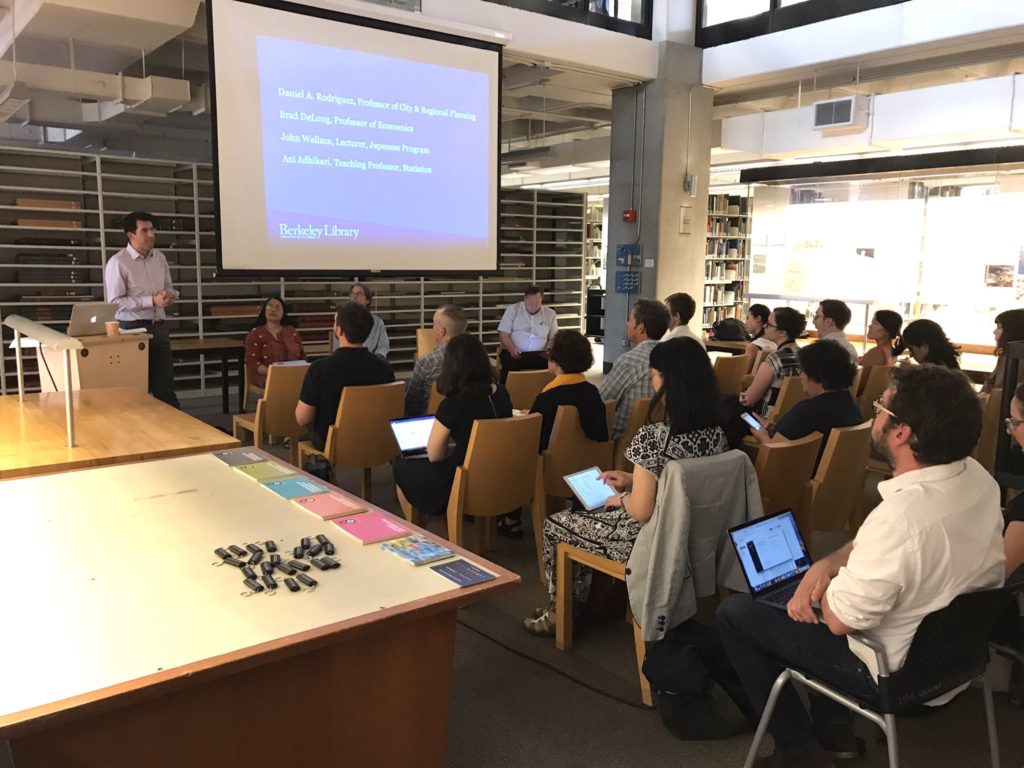
Note: This commentary is being cross-posted on the Center for Teaching & Learning’s blog.
On October 27, 2017, UC Berkeley faculty and lecturers convened to share how they are making textbooks available for free to students—and how they are designing more accessible and transformative learning materials in the process.
In this post, we pass along key takeaways from the stories they shared, in the hope that you may consider implementing similar cost-saving options for students. We also consider why the UC Berkeley campus has come together at this critical moment to address such issues.
This is the first of a series of posts we’ll be doing this semester to dig into the “how” of improving students’ quality of living through affordable and accessible course content.
Students Can’t Afford Class
Before we dive into the lessons gleaned at the October event, campus context behind faculty members’ efforts might help.
Textbook prices have risen 88 percent in the past decade, as detailed in a 2016 Bureau of Labor Statistics report. With UC Berkeley undergrads expected to pay at least $900 (a low estimate) on books and materials each academic year, students are financially encumbered to obtain required readings. The campus is conducting a survey to understand the true impact of these expenses for students—including how textbook costs affect whether students take, remain in, and succeed in their classes.
One way to alleviate financial burden for students is by offering them free, digital versions of their assigned readings that can be accessed online or downloaded to electronic devices. For course readers, this might mean uploading materials to the class bCourse site under fair use principles, and for textbooks, this might mean switching to “open textbooks.” Open textbooks (also called “open educational resources” or OERs) are entirely free for anyone to access, read, and download, and are typically licensed for reuse by others to encourage further downstream adaptation and development. Many instructors and students prefer hard copies, and so open textbooks can often be ordered as “print on demand” for a nominal printing fee, or students can print them out themselves.
In the studies to date on open textbook impact, students who have been given access to open textbooks perform at least as well, and often better, than those without open textbooks. This is likely because the playing field is leveled: Everyone in class has access to the readings from day one, and they’re not beyond anyone’s financial reach.
There are several other key advantages to offering parallel access to digital books: Digital native texts are inherently more accessible to students with disabilities. Screen readers and assistive technologies fare much better working with born digital materials rather than print copies that have been scanned in and converted into optical text (not to mention the potential access delay involved in remediating print content). Digital materials are generally also text searchable, so that students can easily find concepts or passages within their readings.
Seeking to address both affordability and accessibility concerns, in 2017, the Office of the Vice Chancellor for Undergraduate Education (VCUE) charged a campus-wide Course Content Affordability & Accessibility Committee (CCAAC) to identify strategies to educate the campus about the costs of course content, and encourage practices that lower costs for students while also making materials more accessible. CCAAC’s report and recommendations are forthcoming in Spring 2018.
Piloting Innovation
An analogous campus partnership has also been very busy: The University Library, Center for Teaching and Learning (CTL), and Educational Technology Services (ETS) teamed up and obtained a VCUE and Library-endorsed charter to test services aimed at students course content burdens. Through our Affordable Course Content Pilot program, we have incentivized both adoption and creation of open textbooks. Our idea was simple: What if we offered $2000-$5000 grants for faculty and lecturers to switch to an open textbook, or create their own? We would provide the needed digital publishing and programmatic support to facilitate the transition, and the instructors would use or create something new that was open—and free—to all.
We did not expect to get many takers for the pilot, since designing and writing a textbook requires an incredible amount of work. Yet, we underestimated the earnest commitment on this campus for truly making a difference in students’ lives and academic success. In Fall 2017, five faculty members committed to creating their own open textbooks, and two more are on board for Spring 2018. Fall participants included:
- Brad DeLong and Martha Olney, for Economic Theory – Macroeconomics (ECON 101B)
- Evan Variano, for Elementary Fluid Mechanics (CE100)
- John Wallace, for Dynamics of Romantic Core Values in East Asian Premodern Literature and Contemporary Film (EA LANG 105)
- Jonathan Zwicker, for Seminar in Classical Japanese Texts (JAPAN 240)
Most of their books will be unveiled and implemented in their classrooms beginning this semester. In a future blog post, we will explore their creation of these open books, touching on everything from mechanical issues related to the digital platforms and tools being used, publishing mechanics, and how students have received them. (Sneak preview: You do not need to be a technological wizard to create a digital textbook! And, we can help.)
Now, however, we’d like to consider the salient lessons discerned from these faculty members’ experiences in creating open textbooks for the pilot.
Lessons from the Trenches
On October 27, 2017 pilot program participants Brad DeLong and John Wallace were joined by Ani Adhikari (whose Data 8 open textbook has already been in use for several years) in speaking to a rapt crowd about why they chose to create open textbooks, and what they have learned in the process. We have taken the liberty of distilling their guidance.
1. If you create an open textbook, you have tremendous flexibility and complete control over what your students see, and when they see it.
Wallace observed that, although his book on East Asian literature and film will be deployed in Spring 2018, it will remain a work in progress. The beauty of writing and managing one’s own digital material is that changes (and typo fixes!) can be made in real time, without having to wait until your publisher decides to release a new edition. Wallace is utilizing Pressbooks.com to administer his material, and he can log in and change whatever he wants, whenever he wants—sharing his creative product in stages or in full, at his election.
This level of control also offers topical benefits. DeLong and Olney are converting their Macroeconomics print textbook into an open textbook, with interactive data for students to play with as they experiment with formulae and economic theories. To provide meaningful, real world information, DeLong and Olney need to be able to update and adjust content regularly. Because they are in complete command over the Jupyter Notebook which they use to manage their content, they can incorporate current economic events and statistics in real time, or keep it current on a semester-by-semester basis.
2. Creating your own open book allows you to choose your voice and write to connect with your students—and in so doing, capitalize on intellectual freedom as you forge and sculpt your discipline. As you branch off into new knowledge areas, disciplines can be redeveloped into what you make them.
Writing your own open textbook is a tremendous amount of work, but it can also offer tremendous intellectual freedom. Wallace, DeLong, and Adhikari each exclaimed the benefits of being able to write in a tone and on issues directed to their students—using language and content that may not have survived traditional textbook editing processes. The value is that the written material has the potential for resonating more meaningfully with students.
Adhikari discussed some foundational examples in the Data Science 8 textbook, in which she writes vibrantly about a water pump in Victorian London. The lesson frames for students one of the first ways that data was used to establish causality (in this case, mapping cholera outbreaks to a water pump). Here is a brief excerpt:
One of the earliest examples of astute observation eventually leading to the establishment of causality dates back more than 150 years. To get your mind into the right timeframe, try to imagine London in the 1850’s. It was the world’s wealthiest city but many of its people were desperately poor. Charles Dickens, then at the height of his fame, was writing about their plight. Disease was rife in the poorer parts of the city, and cholera was among the most feared. It was not yet known that germs cause disease; the leading theory was that “miasmas” were the main culprit. Miasmas manifested themselves as bad smells, and were thought to be invisible poisonous particles arising out of decaying matter. Parts of London did smell very bad, especially in hot weather. To protect themselves against infection, those who could afford to held sweet-smelling things to their noses.
From reading even just this brief excerpt, it is hard to imagine traditional textbooks so compellingly establishing an argument, or traditional textbook authors maintaining enough editorial control over their work to ensure that these points are included exactly as intended.
3. Digital editions provide valuable portability for students, while preserving print on demand options.
Adhikari and DeLong also addressed portability benefits of open textbooks. UC Berkeley students are incredibly engaged academically, and as a result, under considerable competing demands on their time. It is not uncommon to see students working on portable devices on public transportation or at the gym, just to make the most of any spare moments they have.
In survey responses by students whose classes participated in our pilot program, students near universally described how having online access to, or being able to digitally download, their reading materials improved their learning experience. Not only could they take their readings everywhere (and we mean everywhere!), but also they did not have to lug around numerous heavy books. Many also remarked that they valued not having to “waste paper” and harm the environment. Students knew that printing out the materials was an option, though few reported having chosen to do so—actually preferring the electronic format.
4. You can create an open module or two to fill in the gaps, rather than requiring students to purchase an entire textbook just for a few sections.
Let’s say you have found the perfect textbook for about 80% of your course, but it lacks two or three topics that you cover in class, and for which you assign a separate book entirely. There may be no need to reinvent the wheel in designing an entire textbook from scratch, but perhaps you could create just what you need to fill in the gaps rather than recommending a second book for purchase.
This is precisely what Horst Rademacher of the Berkeley Seismology Lab, did for EPS20 (Earthquakes in Your Backyard). As part of the pilot program, Rademacher created on open module through Pressbooks.com to address one topic: The Hayward Fault at the UC Berkeley campus. Doing so was not only a more reasonable time investment, but also a very efficient way of making sure students had tailor-made access to the specific content they would need for class.
5. If you collocate all digital readings and assignment submissions, it can be easier for graduate student instructors to complete grading, and focus more on pedagogy.
Generating efficiencies in one area necessarily creates opportunities in another. In this case, GSI’s, and instructors alike, can more easily move between and through grading of student work (particularly if coupled with other campus-licensed tools like GradeScope). The ability to centrally locate, quickly navigate, and reliably assess student work can considerably reduce time spent on the logistical aspects of grading. The extra time that was once necessary for grading logistics, can now be better utilized in service of pedagogy and student learning. Faculty discussed greater time available to improve their course materials, implement new pedagogies, or even supplement learning through more formative approaches that were very challenging previously due to time constraints.
6. Open textbooks have the potential to save UC Berkeley students hundreds of thousands of dollars a year, while making access to higher education learning materials more equitable in your class and beyond.
In DeLong’s own words, his forthcoming Macroeconomics textbook can “go big or go home,” and he’s banking on “big.” There are four sections of macroeconomics are taught each year on our campus, with approximately 1000 students. If each of the class sections adopted the DeLong-Olney open textbook rather than the $200 print equivalent, UC Berkeley macroeconomics students could save up to $200,000 each year. Of course, macroeconomics is a staple at institutions across the nation and world. DeLong and Olney are enabling thousands upon thousands of students globally to have access to extremely high quality instructional materials—potentially saving students millions every year. The financial impact that open textbooks can have is quantifiable, and it’s huge.
Financial impact is but one piece of the equitability puzzle. Both DeLong and Adhikari discussed open textbooks’ ability to promote social justice in the classroom, and the sense of obligation they feel as faculty members in doing as much as they can to ensure that all of their students have equal opportunities to succeed.
Get Involved
If you would like to explore the possibility of adopting or creating an open textbook for your class, we would love to meet with you! Limited numbers of $2000-$5000 grants remain available. Please contact schol-comm@berkeley.edu, or visit the Scholarly Communication Website (lib.berkeley.edu/scholcomm) to learn more.
And if you are interested in CCAAC and the pilot team’s report and findings about course content affordability at the UC Berkeley campus, please stay tuned to posts distributed through the Center for Teaching and Learning and the Library’s Scholarly Communication program’s Twitter account, @UCB_scholcomm.
Discover Affordable Course Content and Open Textbook Options in Workshop Series
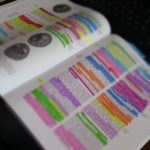 Concerned about the impact of high textbook and course reader costs on students? Interested in discovering pedagogically rich and innovative solutions? Consider attending the below workshops to understand the landscape for rising course content expenses, and what you can do to both lower students’ expenditures and improve their educational experience. If you have any questions, please feel free to contact schol-comm@berkeley.edu. We hope to see you there!
Concerned about the impact of high textbook and course reader costs on students? Interested in discovering pedagogically rich and innovative solutions? Consider attending the below workshops to understand the landscape for rising course content expenses, and what you can do to both lower students’ expenditures and improve their educational experience. If you have any questions, please feel free to contact schol-comm@berkeley.edu. We hope to see you there!
Friday, Oct. 27
Making Textbooks and Course Readers Affordable
11 a.m.-12:30 p.m. | Wurster Hall, Environmental Design Library
Register http://bit.ly/1027ACC
Do you wonder how to make your assigned readings more affordable, and how much time and effort you’d need to invest? The University Library and Center for Teaching and Learning have partnered in an innovative pilot program to reduce course content expenses and incentivize the creation of high quality, free, and open course materials. In this panel event, you’ll hear from participating faculty and lecturers who will discuss their experiences and provide practical tips from the leading edge of course content affordability. Refreshments will be provided.
Friday, Dec. 8
Open Textbook Workshop – Faculty & Lecturers
9:30 a.m. – 11:30 a.m. | Academic Innovation Studio, 127 Dwinelle Hall
Apply http://bit.ly/facultyOpenTextwkshp
Are you an instructor who is concerned about the impact of high textbook costs on your students? Do you want to adopt or create innovative pedagogical materials? Explore possible open textbook solutions by attending a two hour workshop and writing a short textbook review. The Library will provide you with a $200 stipend for your efforts! Space is limited, so please submit a very brief application form: http://bit.ly/facultyOpenTextwkshp
Friday, Dec. 8
Open Textbook Workshop – Staff & Campus Partners
12:45 p.m. – 2:45 p.m. | Academic Innovation Studio, 127 Dwinelle Hall
Register http://bit.ly/openwkshpcampuspartners
Are you a UC Berkeley staff or affiliate who is concerned about the impact of high textbook costs on students, or you are working with a faculty member who is? Do you want to support the adoption or creation of innovative pedagogical materials? Learn the landscape, opportunities, and challenges for adopting and creating open textbooks, and how to discuss whether open textbooks are a good fit.
Tuesday, Feb. 20
Publish Digital Books and Open Textbooks with Pressbooks
1:10-2:30 p.m. | Academic Innovation Studio, Dwinelle Hall 117 (Level D)
Register http://bit.ly/0220pressbooks
If you’re looking to self-publish work of any length and want an easy-to-use tool that offers a high degree of customization, allows flexibility with publishing formats (EPUB, MOBI, PDF), and provides web-hosting options, Pressbooks may be great for you. Pressbooks is often the tool of choice for academics creating digital books, open textbooks, and open educational resources, since you can license your materials for reuse however you desire. Learn why and how to use Pressbooks for publishing your original books or course materials. You’ll leave the workshop with a project already under way!
Boost Your Scholarly Publishing Skills During Open Access Week, Oct. 23-27

Open Access connects your scholarship to the world, and helps you gain global readership. For the week of Oct. 23-27, the UC Berkeley Library is highlighting these connections.
You can attend five exciting workshops and panels that bridge real-world scholarly publishing skills with the connectedness that open access offers.
What’s Open Access?
Open Access (OA) is the free, immediate, online availability of scholarship. Often, OA scholarship is also free of accompanying copyright or licensing reuse restrictions, promoting further innovation. OA removes barriers between readers and scholarly publications—connecting readers to information, and scholars to emerging scholarship and other authors with whom they can collaborate, or whose work they can test, innovate with, and expand upon.
Open Access Week @ UC Berkeley
OA Week 2017 is a global effort to bring attention to the connections that OA makes possible. At UC Berkeley, the University Library—with participation from partners like the Graduate Division, California Digital Library, Center for Teaching & Learning and more—has put together engaging programming demonstrating OA’s connections in action. We hope to see you at the events, where you can continue to build your scholarly publishing skills.
Schedule
Refreshments provided at all events, and attendance enters you into raffle for prizes! To find out more about each event, please visit our Scholarly Communication Events page.
Monday, Oct. 23
Copyright and Your Dissertation
1-2:30 p.m. | 309 Sproul Hall
Register http://bit.ly/1023copyright
From the beginning of the writing process to submitting and publishing your dissertation or thesis, we will walk you through a useful workflow for addressing copyright and other legal considerations.
Tuesday, Oct. 24
First Books & Publishing Your Dissertation
2-3:30 p.m. | 309 Sproul Hall
Register http://bit.ly/1024publishing
Hear from expert panelists about what happens once you submit your dissertation, how to shape your dissertation’s impact, and how to go about publishing your first book.
Wednesday, Oct. 25
Increasing and Monitoring Scholarly Impact
10-11:30 a.m. | 309 Sproul Hall
Register http://bit.ly/1025impact
Discover strategies and tips for preparing and promoting your scholarship, and the best ways to monitor and increase your citations and success. You’ll also learn how to: understand metrics, select and use scholarly networking tools, choose reputable open access journals and publishing options, and participate in open access article and book funding opportunities.
Thursday, Oct. 26
Understanding the (Changing) Realm of Peer Review
1-2:30 p.m. | 309 Sproul Hall
Register http://bit.ly/1026understandpeer
Are you publishing an article or reviewing someone else’s work? Panelists demystify the peer review process, what’s expected of you and what you’ll experience, and how the world of peer review is evolving with new models that foster transparency and impact.
Friday, Oct. 27
Making Textbooks and Course Readers Affordable
11 a.m.-12:30 p.m. | Wurster Hall, Environmental Design Library
Register http://bit.ly/1027ACC
Do you wonder how to make your assigned readings more affordable, and how much time and effort you’d need to invest? The University Library and Center for Teaching and Learning have partnered in an innovative pilot program to reduce course content expenses and incentivize the creation of high quality, free, and open course materials. In this panel event, you’ll hear from participating faculty and lecturers who will discuss their experiences and provide practical tips from the leading edge of course content affordability.
We hope to see you there!
Questions? E-mail schol-comm@berkeley.edu, or check out our Scholarly Communication Services website.
Academic Council Affirms Commitment to Open Access Efforts like OA2020
By letter to University of California President Janet Napolitano, the Academic Council has enthusiastically endorsed and affirmed university-wide commitments to make UC research and scholarship as freely and openly available as possible.
The letter of the Academic Council, which advises the UC President on behalf of the Assembly, updates President Napolitano on various campus efforts to fulfill the University’s mission of providing long-term societal benefits through transmitting advanced knowledge. As the Council notes, one way that the University has been working to achieve its mission is through implementation of the 2013 Open Access policy, pursuant to which UC scholars widely disseminate their scholarship by making copies available open access (OA). OA promotes free, immediate access to research articles and the rights to use these articles to advance knowledge worldwide.
“As the nation’s largest public research institution and a source of two percent of the world’s research literature,” explains Jim Chalfant, Academic Council Chair, “the University of California is uniquely positioned to further this goal for the benefit of people all over the world who currently do not have access to the vast majority of scholarly research articles.”
Indeed, since the adoption of the 2013 OA policy, the ten UC campuses have made important progress toward increasing both the dissemination and impact of UC scholarship while reducing barriers to readership.
One way in which the Berkeley campus has contributed to a more open scholarly landscape is by engaging in open access initiatives such as OA2020, noted in particular in the Council’s letter. OA2020 is an international movement, led by the Max Planck Digital Library in Munich, to convert the entire corpus of scholarly journal literature to open access by the year 2020. The OA2020 movement intends to accomplish this “flipping” by encouraging institutions to convert resources currently spent on journal subscriptions into funds that support sustainable OA business models. Berkeley signed the OA2020 Expression of Interest in March 2017 along with UC Davis and UCSF.
In affirming UC Berkeley, UC Davis, and UCSF’s participation in OA2020 and similar initiatives, the Academic Council avows OA2020’s alignment with both the 2013 OA policy and the UC’s mission to conduct research in the public interest and serve society. Accordingly, both the Council and the Academic Senate’s Committee on Library and Scholarly Communication “support all efforts by UC campuses to promote open access to scholarly research, both in the service of the University’s Open Access mission and in the service of similarly-oriented global missions such as OA2020.”
To learn more about why UC Berkeley, UC Davis, and UCSF signed the OA2020 Expression of interest, please see our joint statement, Why OA2020? (attached as Appendix C to the Academic Council’s letter), or our website, OA2020.us.
To discover more about the many initiatives in which the UC Berkeley Library engages to advance progress toward sustainable open access publishing, please see our Scholarly Communication Services page about our Open Access Initiatives.
We warmly welcome opportunities to talk more about these efforts, so please feel free to reach out to us: schol-comm@berkeley.edu.
Participate in an Affordable Course Content Pilot Program!
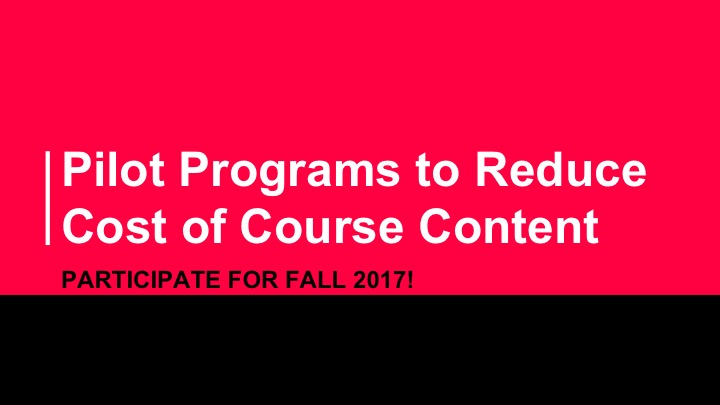
Dear UC Berkeley faculty and lecturers,
We can help you make your assigned readings and textbooks more affordable to students. The Library and the Center for Teaching & Learning have launched two pilot programs for Fall 2017, for which your participation can save students potentially hundreds of dollars each.
-
The first pilot service aims to reduce the cost of your print course packs through Library-assisted syllabus processing. We will locate copies of open, free, or Library-licensed versions of your assigned readings so the overall price of the print course pack or course reader is reduced.
-
The second service provides you with grants to either use, adapt, or develop open or library-licensed electronic textbooks and course materials. This can help save students the cost of purchasing expensive textbooks.
Please fill out this brief form if you are interested in participating in one or both pilots (described more fully below), and we will contact you soon with details.
______________________________
Pilot 1 (Course Packs): Do you assign your students a print course pack for purchase? We can help reduce the cost of that print course pack.
With the first piloted service, the Library will process your syllabus for you and search for your required readings to locate copies of open, free, or Library-licensed versions of assigned readings.
-
If open, free, or Library-licensed versions are available, we will give you links or PDFs to post to bCourses at no cost to your students, reducing any remaining readings that a student would have purchased as part of a print course pack.
-
We will also provide guidance to you for making fair use decisions–further reducing the cost of course packs, because we can help you limit instances in which a third party copy center would need to secure copyright clearance for assigned readings.
______________________________
Pilot 2 (Grants): If you assign textbooks or other books, will you let us pay you from $500 up to $5,000 to switch to an electronic version of that book or to an equivalent eBook or combination of books? Or will you let us help you in adopting, adapting, or designing your own open and electronic course materials?
The Library and the Center for Teaching and Learning are offering grants and programmatic support to instructors to enable you to link to open or Library-licensed electronic textbooks or other eBooks–or even to design your own.
-
The grants range in value from $500 (e.g. for switching one required print book to a Library-licensed electronic book that can be linked to in bCourses) all the way up to $5,000 to receive programmatic support to design your own open & electronic course materials for students so they don’t have to purchase expensive textbooks.
-
The Center for Teaching & Learning and the Library can also help you find campus support to update any other attendant PowerPoints, assignments, or materials that need alteration following a change in assigned books or textbooks.
If you have any questions, please contact the Library’s Scholarly Communication Officer, Rachael Samberg: rsamberg@berkeley.edu. You can also find out more about affordable course content in our Guide to Open, Free, & Affordable Course Materials.
Library will fund publishing of open access scholarly books
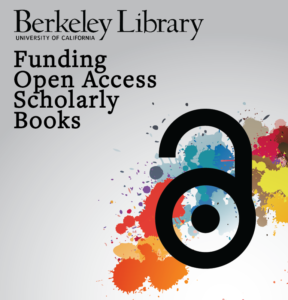 The Library is expanding the Berkeley Research Impact Initiative (BRII) program so that Berkeley authors can publish scholarly books open access at zero or substantially reduced costs—making these books free and accessible to readers around the globe.
The Library is expanding the Berkeley Research Impact Initiative (BRII) program so that Berkeley authors can publish scholarly books open access at zero or substantially reduced costs—making these books free and accessible to readers around the globe.
The BRII program fosters broad public access to the work of Berkeley scholars by encouraging the Berkeley community to take advantage of open access (OA) publishing opportunities. OA literature is free, digital, and available to anyone online. With barrier-free access, researchers and decision-makers from anywhere in the world can read the scholarly output of UC Berkeley authors.
“OA publishing is helping us advance the relevance and reach of our science so that it can get in front of the people who need to be seeing it, and who are in a position to act upon the results of our research in ways that we as scientists alone can’t,” says Rachel Morello-Frosch, UC Berkeley Professor of Environmental Science, Policy and Management. “BRII helped me make access to my research affordable and it wiped away a lot of barriers.”
Morello-Frosch has published several articles OA using BRII funds. The funds are applied toward article processing charges (APCs), which many journal publishers impose on authors and which can range from $750-$3500 or more. These fees serve to replace revenue the publisher would have generated via library subscriptions if access to the journal had been licensed by the library for campus readers. BRII began in 2008 by redirecting a small amount of Library collections funds to help authors cover these APCs for open access journals so that Berkeley authors could participate in the wider dissemination that OA publishing offers.
While many scholars in the humanities and social sciences publish in OA journals, they also publish scholarly books, termed “monographs”. These books become a critical component of professional credentialing, yet their readership is limited by the same kinds of access barriers endemic to subscription-based journals: The scholarly books are quite expensive, and increasingly fewer libraries can afford to purchase them. By expanding BRII to also cover the publishing fees for OA books, BRII can help Berkeley authors publish long-form scholarship that can be read by anyone at no cost.
These digital editions of peer-reviewed and professionally edited OA books typically offer readers more than just the text itself. Digital monographs can also incorporate multimedia with the text, include annotation and commenting tools, and provide platforms that further encourage the development of innovative scholarship.
University presses’ funding models for financing OA books are innovative and evolving. UC Press’ Luminos program, for instance, is formulated as a partnership in which costs and benefits are shared by member organizations. Many academic publishers also offer a print or print-on-demand version of the book for sale to readers who prefer hard copies, further enabling cost recovery through traditional print sales. Some publishers have found that making the book available OA not only drives up digital readership but also print sales, too.
At their core, most OA book funding models typically charge academic authors the equivalent of an APC. Yet, given the greater investment needed to create and edit longer and more complex manuscripts, the book processing charges (BPCs) can range upwards of $7000. This sum can be out-of-reach for humanities and social sciences authors if available funding sources do not adequately cover research and publication needs.
To address this situation, in this first pilot year of funding BPCs, BRII will offer $7500 a piece in publishing fees for up to three OA scholarly books.
“The expanded BRII program will support increased OA publishing by Berkeley humanists and social scientists, and augment the reach of their work,” explains University Librarian Jeffrey MacKie-Mason. “We aim to democratize scholarly publishing by lowering access barriers and increasing Berkeley impact, and subvention funding for OA books allows us to do just that.”
To learn more about the expanded BRII program, please see the updated BRII guide. With questions about obtaining BRII funding, contact openaccess@lists.berkeley.edu.
Library Statement on Commitment to Free and Open Information, Scholarship, and Knowledge Exchange

Global Knowledge Exchange
This post originally appeared on the University of California Office of Scholarly Communication‘s blog, March 6, 2017.
The University of California Office of Scholarly Communication (OSC) and the University of California Libraries issue the following statement in response to recent actions by the new federal administration and in order to address resulting concerns about continued open access to and preservation of information, scholarship, and knowledge.
The unfettered exchange and careful preservation of information are fundamental to democracy, progress, and intellectual freedom. The critical research and scholarship conducted by government entities and academic institutions worldwide safeguard and support human rights, public health, the environment, artistic and literary enterprise, scientific and technological innovation, and much more. This scholarship is critical for informed discourse and policy development throughout society. As such, the fruits of governmental and scholarly research—the data and documentation generated and released—must remain publicly available and must not be suppressed, endangered, or altered to serve political ends.
To encourage broad dissemination of research and scholarship, the faculty of the University of California and the UC President have implemented open access policies that echo many of the open data and scholarship mandates adopted by the federal government. Recognizing that open access to research increases scientific, scholarly, and critical knowledge, the UC system has committed, via these policies, to making all UC scholarly articles widely and freely accessible, regardless of access restrictions elsewhere. Now more than ever, UC faculty and staff’s participation in these open access policies is fundamental to ensuring persistent, unfettered access to valuable data and research.
OSC and the UC Libraries are working to protect public access to government data and research in the event that the original sources for these materials should be compromised. In the coming weeks, OSC and librarians on each of the UC campuses will identify specific actions to be taken to ensure that research data, publications, and scholarship remain accessible and discoverable. These efforts are not intended to supplant the authoritative sources for government data, publications, and information. Rather, we are working to make certain that these materials remain shielded from inappropriate political influence or suppression.
We support similar information rescue and preservation efforts taking place around the country and encourage other institutions to join in this commitment. We look forward to seeing statements from our peer institutions (and encourage any who wish to borrow or adapt ours), and we welcome opportunities to work with these institutions on projects supporting access to and preservation of the scholarly record. In particular, we offer our collaboration to those working in disciplines or within organizations facing new threats.
In the meantime, we wish to underscore our commitment to advocating not only for researchers and authors at UC campuses, but also for scholars and readers worldwide, and to emphasize our dedication to ensuring information access as an essential public good. We will continue to champion these professional and democratic values and to challenge any policies or practices that levy obstacles to intellectual exchange.
Research Data Publishing & Licensing 101
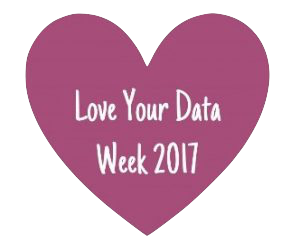 Please join Science Data & Engineering Librarian Anna Sackmann and Scholarly Communication Officer Rachael Samberg for practical tips about why, where, and how to publish and license your research data.
Please join Science Data & Engineering Librarian Anna Sackmann and Scholarly Communication Officer Rachael Samberg for practical tips about why, where, and how to publish and license your research data.
This workshop will be held from 11 a.m.–12 p.m., Doe Library, Rm. 190 (BIDS) on February 16, 2017 as part of Love Your Data Week. Check out the reservation form!
Why Should We Care About Publishing Research Data?
Sharing research data promotes transparency, reproducibility, and progress. Indeed, it can spur new discoveries on a daily basis. It’s not atypical for geneticists, for example, to sequence by day and post research results the same evening—allowing others to begin using their datasets in nearly real time (see, for example, Pisani & AbouZahr’s paper about this data publishing cycle). The datasets researchers share can, in turn, inform business or regulatory policymaking, legislation, government or social services, and much more.
Publishing your research data can also increase the impact of your research, and with it, your scholarly profile. Depositing datasets in a repository makes them both visible and citable. You can include them in your CV and grant application biosketches. Conversely, scholars around the world can begin working with your data and crediting you. As a result, sharing detailed research data can be associated with increased citation rates (check out this Piwowar et al. study, among others).
Publishing your data may also be required. Federal funders (e.g. National Institutes of Health), grant agencies (e.g. Bill & Melinda Gates Foundation), and journal publishers (e.g. PLoS and other journals listed in this Open Access Directory) increasingly require that datasets be made publicly available to readers—often immediately upon associated article publication.
How Do We Publish Data?
Merely uploading your dataset to a personal or departmental website won’t achieve these aims of promoting knowledge and progress. Datasets should be able to link seamlessly to any research articles they support. Their metadata should be compatible with bibliographic management and citation systems (e.g. CrossRef or Ref Works), and be formatted for crawling by abstracting and indexing services. After all, you want to be able to find other people’s datasets, manage them in a your own reference manager, and cite them as appropriate. So, you’d want your own dataset to be positioned for the same discoverability and ease of use.
How can you achieve all this? It sounds daunting, but it’s actually pretty straightforward and simple. You’ll just want to select a data publishing tool or service that is built around both preservation and discoverability: It should offer you a stable location or DOI (which will provide a persistent link to your data’s location), help you create sufficient metadata to facilitate transparency and reproducibility, and optimize the metadata for search engines.
For instance, UC’s Dash tool is a terrific and easy-to-use solution that preserves and publishes your datasets. At the Feb. 16 workshop we’re hosting, you can learn more about how to prepare, describe, and upload your data for deposit and publishing with Dash and other tools.
We also recommend that, if your chosen publishing tool enables it, you should include your ORCID (a persistent digital identifier) with your datasets just like with all your other research. This way, your research and scholarly output will be collocated in one place, and it will become easier for others to discover and credit your work.
What Does it Mean to License Your Data For Reuse?
Uploading a dataset—with good metadata, of course!—to a repository is not the end of the road for shepherding one’s research. We must also consider what we are permitting other researchers to do with our data. And, what rights do we, ourselves, have to grant such permissions—particularly if we got the data from someone else, or the datasets were licensed to us for a particular use?
To better understand these issues, we first have to distinguish between attribution and licensing. Citing datasets is an essential scholarly practice. But the issue of someone citing your data is separate from the question of whether it’s permissible for them to use the data in the first place. That is, what license for reuse have you applied to the dataset?
The type of reuse we can grant depends on whether we own our research data and hold copyright in it. There can be a number of possibilities here. For instance, sometimes the terms of contracts we’ve entered into (e.g. funder/grant agreements, website terms of use, etc.) dictate data ownership and copyright. Sometimes, our employers own our research data under our employment contracts (e.g. the research data is “work-for-hire”). In some cases, the dataset might not be copyrightable to begin with if it does not constitute original expression. We could run into hot water if we try to grant licenses to data for which we don’t actually hold rights. For an excellent summary addressing these “Who owns your data?” questions, including copyright issues, check out this blog post by Katie Fortney written for the UC system-wide Office of Scholarly Communication.
To try to streamline ownership and copyright questions, and promote data reuse, often data repositories will simply apply a particular “Creative Commons” license or public domain designation to all deposited datasets. For instance:
- Dryad and BioMed Central repositories apply a Creative Commons Zero (CC0) designation to deposited data—meaning that, by depositing in those repositories, you are not reserving any copyright that you might have. Someone using your dataset still should cite the dataset to comply with scholarly norms, but you cannot mandate that they attribute you and cannot pursue copyright claims against them.
- UC Dash applies a Creative Commons Attribution (CC-BY) license to datasets deposited by UC researchers. This means that someone using your Dash-deposited dataset not only should cite it to adhere to scholarly norms, but also is required to attribute you as the author.
What’s the Right License or Designation for Your Data?
Well, sometimes you don’t have a say in the matter, as your funding agreement or the repository you choose dictates the license applied. Otherwise, it’s worth considering what your goals are for sharing the data to begin with, and selecting a designation or license that both meets your needs and fits within whatever ownership and use rights you have over the data. Your Scholarly Communication Officer or librarian can help you with this.
Bear in mind that ambiguity surrounding the ability to reuse data inhibits the pace of research. So, try to identify clearly for potential users what rights are being granted in the dataset you publish.
How To Learn More if You’re a UC Berkeley Researcher
Come to the workshop, of course! For data publishing questions, contact the Research Data Management team at researchdata@berkeley.edu. With questions about data ownership, copyright, or licensing, contact the Library’s Scholarly Communication Officer at rsamberg@berkeley.edu. You can also check out the Research Data Management website for more on preserving and disseminating your data. In the meantime, we hope to see you at the workshop next week!
by Rachael Samberg in Scholarly Communications on February 9th, 2017
UC Berkeley Open Access Authors: We’re Celebrating You!
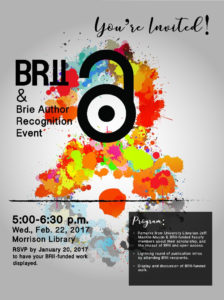
Join faculty, students, and colleagues for wine and cheese as the UC Berkeley community recognizes and discusses UCB open access papers at the BRII & Brie Author Recognition Event (open to all) being held in Morrison Library on Feb. 22, 2017 from 5:00-6:30 p.m.
We’re Celebrating Because You’ve Published For Impact
You’re over the moon because your new paper has just been accepted to a high-impact journal that is published open access—free, digital, and available to anyone online. You chose this journal because open access (OA) publishing can promote increased readership by lowering access barriers, and can spur innovation through fewer restrictions on use.
But suddenly you’re faced with a quandary: There’s a steep fee to make all this happen—an “article processing charge” (APC), typically somewhere between $650-$3,500, that authors are asked to provide to publishers for OA publication in lieu of typical print-subscription fees paid for by libraries. You want people to read and cite your scholarship, and you hope to advance knowledge by enabling maximal use of your scholarly output. But how can you finance and participate in this new scholarly publishing landscape?
One option is to deposit a copy of the article you submitted into a repository, in keeping with the UC system’s OA policy. (For more on the OA policy, see the UCOP Office of Scholarly Communication’s helpful guide.) To that end, UC scholars and staff can deposit pre-print copies of their publications in eScholarship (the repository created by California Digital Library), or can choose a discipline-specific repository like arXiv or the new Humanities Commons.
Depositing preprints and making them available at no cost to the public in this fashion can have remarkable impacts for building knowledge and augmenting your academic reputation. Yet, there is still one other parameter of an APC-based OA publishing system that remains to be addressed: covering the APC, itself. What can you do when an esteemed open access journal like BMC Biology asks you to provide $2,785 to publish your accepted paper in their online journal? Maybe you have grant funds to cover this APC, but maybe you don’t, and maybe you don’t have a grant at all.
What’s The Solution?
UC Berkeley’s Library can help, and we’re about to start celebrating that. The Berkeley Research Impact Initiative (BRII) makes APC funding available to UC Berkeley authors (current faculty members, post-docs, students, researchers) and publishers (campus Centers, Organized Research Units, and Departments) to make your publications free to all readers immediately upon publication—thereby also helping to increase the impact of your scholarship.
Started in 2008, BRII has provided around $400,000 of funding for several hundred articles and publications across numerous discipline areas. In a 2016 paper, authors Teplitzky and Phillips reported that 89% of responding BRII recipients agreed that the availability of BRII to help pay the APC or open access fee for their article affected their decision about where to publish, and 44% had not published an open access article prior to the one funded by BRII. Most respondents (82%) believed their article had a greater impact overall because it was OA.
Let’s Celebrate UC Berkeley Scholarship!
So, it’s high time to recognize the scholarship of BRII-funded authors, and raise awareness about available BRII funding. That’s exactly what the Library will be doing with the BRII & Brie Author Recognition Event (open to all) being held in Morrison Library on Feb. 22, 2017 from 5:00-6:30 p.m.
You can hear remarks from University Librarian Jeff MacKie-Mason and BRII-funded faculty members about their scholarship, and the impact of BRII and open access. There will also be a lightning round of paper discussions by attending BRII recipients, so you can learn more about the OA scholarship being created here at UC Berkeley. BRII-funded works will also be displayed, so if you already are a BRII recipient, please RSVP by January 20 to have your work shown at the event.
We hope you’ll join us to celebrate your colleagues in an evening of learning and author recognition. If you know little about OA or BRII, but aspire to publish, please join us to find out more about this important funding program. RSVP here!
Digital Humanities for Tomorrow
Opening the Conversation About DH Project Preservation
By Rachael G. Samberg & Stacy Reardon
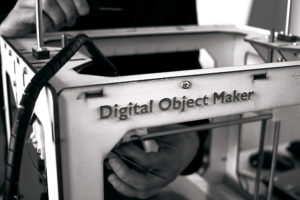
Digital Object Maker. Sayf, CC BY-NC-ND 2.0
After intensive research, hard work, and maybe even fundraising, you launch your digital humanities (DH) project into the world. Researchers anywhere have instant access to your web app, digital archive, data set, or project website. But what will happen to your scholarly output in five years? In twenty-five? What happens if you change institutions, or institutional priorities shift? Will your digital project be updated or forced to close up shop? Who should ensure that your project remains available to researchers? Which departments should guide long-term sustainability of your research? Continue reading “Digital Humanities for Tomorrow”